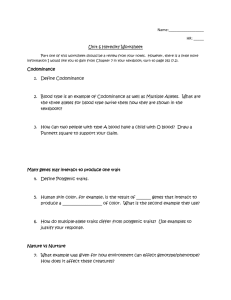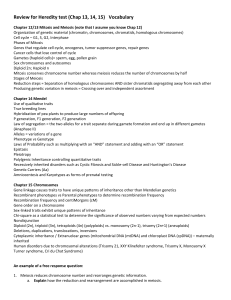Genetics Unit Outline
advertisement
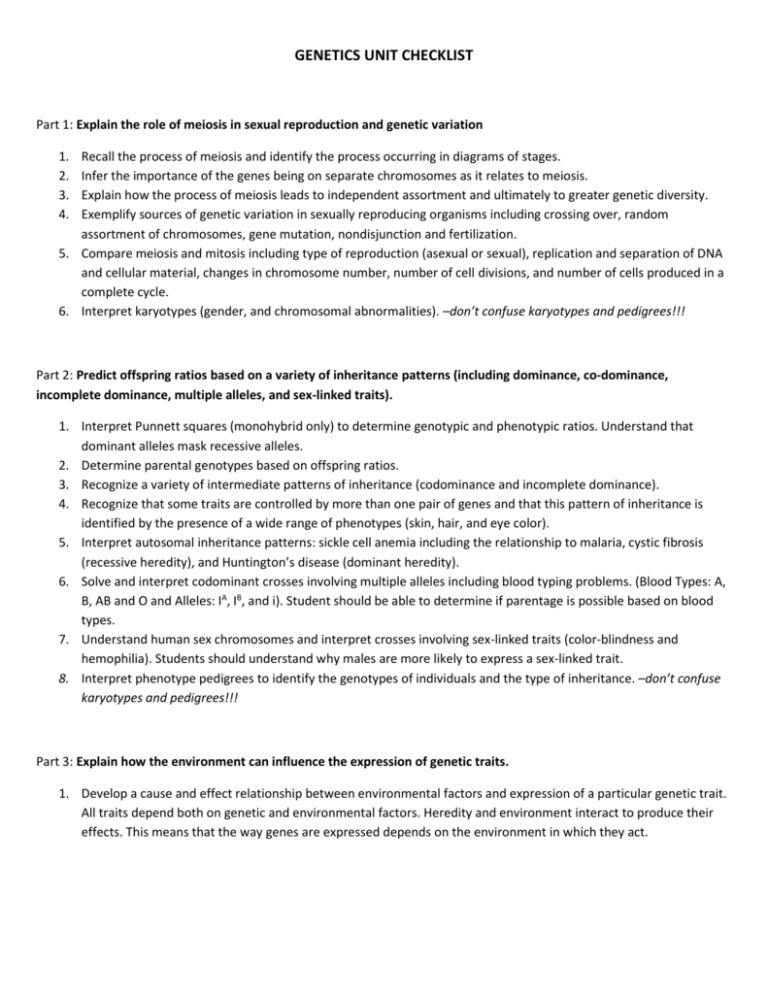
GENETICS UNIT CHECKLIST Part 1: Explain the role of meiosis in sexual reproduction and genetic variation 1. 2. 3. 4. Recall the process of meiosis and identify the process occurring in diagrams of stages. Infer the importance of the genes being on separate chromosomes as it relates to meiosis. Explain how the process of meiosis leads to independent assortment and ultimately to greater genetic diversity. Exemplify sources of genetic variation in sexually reproducing organisms including crossing over, random assortment of chromosomes, gene mutation, nondisjunction and fertilization. 5. Compare meiosis and mitosis including type of reproduction (asexual or sexual), replication and separation of DNA and cellular material, changes in chromosome number, number of cell divisions, and number of cells produced in a complete cycle. 6. Interpret karyotypes (gender, and chromosomal abnormalities). –don’t confuse karyotypes and pedigrees!!! Part 2: Predict offspring ratios based on a variety of inheritance patterns (including dominance, co-dominance, incomplete dominance, multiple alleles, and sex-linked traits). 1. Interpret Punnett squares (monohybrid only) to determine genotypic and phenotypic ratios. Understand that dominant alleles mask recessive alleles. 2. Determine parental genotypes based on offspring ratios. 3. Recognize a variety of intermediate patterns of inheritance (codominance and incomplete dominance). 4. Recognize that some traits are controlled by more than one pair of genes and that this pattern of inheritance is identified by the presence of a wide range of phenotypes (skin, hair, and eye color). 5. Interpret autosomal inheritance patterns: sickle cell anemia including the relationship to malaria, cystic fibrosis (recessive heredity), and Huntington’s disease (dominant heredity). 6. Solve and interpret codominant crosses involving multiple alleles including blood typing problems. (Blood Types: A, B, AB and O and Alleles: IA, IB, and i). Student should be able to determine if parentage is possible based on blood types. 7. Understand human sex chromosomes and interpret crosses involving sex-linked traits (color-blindness and hemophilia). Students should understand why males are more likely to express a sex-linked trait. 8. Interpret phenotype pedigrees to identify the genotypes of individuals and the type of inheritance. –don’t confuse karyotypes and pedigrees!!! Part 3: Explain how the environment can influence the expression of genetic traits. 1. Develop a cause and effect relationship between environmental factors and expression of a particular genetic trait. All traits depend both on genetic and environmental factors. Heredity and environment interact to produce their effects. This means that the way genes are expressed depends on the environment in which they act.
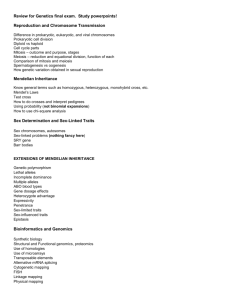
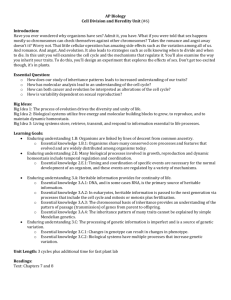
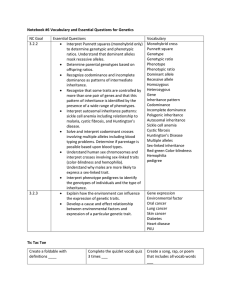

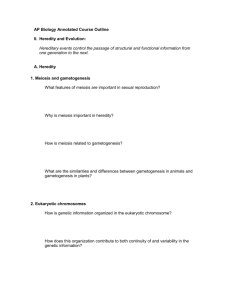

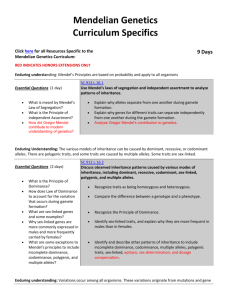
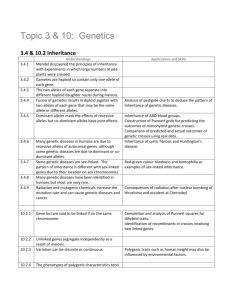
![[11.1,11.2,11.3] COMPLEX INHERITANCE and HUMAN HEREDITY](http://s3.studylib.net/store/data/006715925_1-acaa49140d3a16b1dba9cf6c1a80e789-300x300.png)
